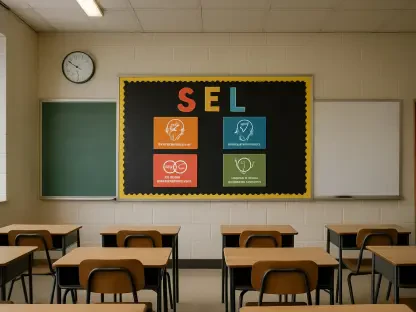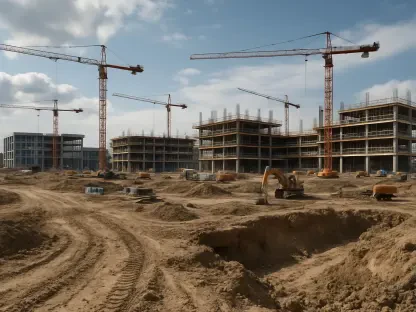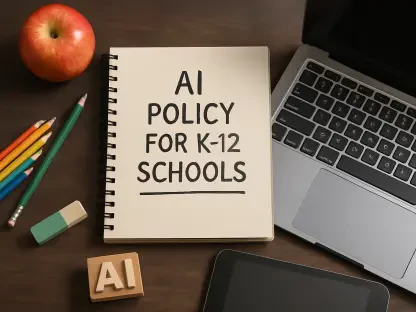The intricate connections between family income, social mobility, and educational opportunities form a crucial discussion topic in today’s socio-economic landscape. These variables interplay to shape a child’s educational path and eventual socio-economic standing. A vivid example is the story of Eve, a mother from Colorado, who experienced an unexpected financial windfall. This incident serves as a springboard for broader discussions on income inequality and social mobility in the United States. Eve’s situation illustrates how fleeting financial boosts can be for impoverished families and highlights both the emotional and practical impacts of unexpected changes in income. Her journey from a recipient of aid to a benefactor is both inspiring and eye-opening, bringing into sharp focus the complexities of financial stability and its impact on education.
The narrative underscores the significant role that family income plays in molding student outcomes. It seeks to answer an essential question: How crucial is family income in shaping the educational and socio-economic futures of students, especially those entrenched in poverty? Grounded in personal anecdotes like Eve’s, as well as various studies and research, the discussion delves deep into the interplay between income, access to educational opportunities, and the resulting socio-economic mobility. The story of Eve adds a personal touch, making the broader socio-economic implications more relatable and urgent.
The Significance of Family Income in Shaping Student Outcomes
A pivotal study published in the journal Educational Researcher, authored by Eric Dearing and colleagues, aimed to quantify the accrual of educational opportunities and their long-term impacts. The research utilized federal data that tracked 814 students from birth to age 26 across ten U.S. cities. One of the study’s most critical concepts is the notion of “opportunity gaps.” This term highlights the disparities in the number of chances children from varying income levels have to engage in supportive learning environments. Data from the study revealed that children from high-income families enjoyed six-to-seven times more opportunities to learn compared to their low-income counterparts, while middle-income families had four times as many opportunities.
The study suggests that income itself is an indirect factor in educational attainment and future earnings. Instead, the direct influence comes from access to “educational opportunities.” These include high-quality child care, engaging home environments, excellent schooling, and enriching after-school programs. Essentially, financial resources enable families to procure these opportunities, cumulatively enhancing children’s educational outcomes. The findings underscore the importance of consistent, high-quality educational environments in fostering student success and social mobility.
Income, therefore, serves as a crucial enabler, allowing families to secure the necessary resources that support and enhance their children’s educational journeys. This accumulation of opportunities over time plays a significant role in shaping educational and socio-economic outcomes. It becomes evident that the disparities in access to educational opportunities contribute to the broader challenges of social mobility and economic inequality. Addressing these opportunity gaps is essential for creating a more equitable and inclusive society.
Consistency of Support and Its Critical Role
Eric Dearing emphasizes that the continuous accumulation of opportunities over time is crucial for students’ educational success. He points out that continuous exposure to high-quality environments across various settings—including home, school, and child care—proves to be more beneficial than intermittent access. This consistent support helps explain why high-quality preschool programs alone might not be enough to uplift educational outcomes significantly. According to Dearing, the key is sustained, high-quality interaction and learning opportunities over an extended period, rather than isolated, short-term interventions.
The discussion expands to structural challenges, pointing to the extreme inequity present in the education system. While high-quality instruction is essential, it must be sustained to effect significant changes. Dearing advocates for broader support systems, such as the community school model and programs like City Connects at Boston College, which address both academic and non-academic needs. These programs aim to support the “whole child” by linking them to resources like food banks and healthcare services, thereby alleviating some burdens from teachers and focusing on holistic development. By integrating these support systems, the aim is to create a more nurturing and supportive environment for students, which in turn can lead to better educational outcomes.
These broader support systems are designed to address the complex needs of students, recognizing that academic success is influenced by various factors outside the classroom. Ensuring access to essential resources like nutrition, healthcare, and emotional support can alleviate some of the obstacles low-income students face. By focusing on holistic development, these programs aim to provide a more equitable learning environment, where all students have the opportunity to thrive.
Structural Challenges and Policy Interventions
The article takes a broader political perspective by discussing Kamala Harris’s proposed plans to enhance economic opportunity through policies like expanded earned income tax credits. These initiatives aim to reinvigorate the middle class and tackle inequality head-on. However, the stagnation in wages and escalating inequality since 1991 accentuate the urgency for such reforms. The political landscape plays a crucial role in shaping economic policies that can bridge the opportunity gaps highlighted by the research. Addressing wage stagnation and promoting income equality are essential steps in creating a more equitable society.
The study also acknowledges some positive developments, such as the increased availability of public preschool and enhanced earned income tax credits, which have slightly mitigated some disparities. Yet, Dearing notes potential gaps in previous research, particularly the need to consider cultural differences in caregiving roles. For instance, in many Black communities, extended family members like grandmothers play a significant educational role, possibly compensating for financial deficits. This nuanced understanding could provide a more accurate picture of diverse family dynamics influencing learning opportunities.
By incorporating a broader political and cultural perspective, the discussion highlights the need for comprehensive policy interventions that address the root causes of educational and socio-economic disparities. Political leaders and policymakers play a crucial role in creating an environment where all students have access to the necessary resources for success. The acknowledgment of cultural differences and the unique challenges faced by various communities is essential for creating inclusive and effective policies.
Holistic Support Systems and Community Resources
The complex connections among family income, social mobility, and educational opportunities are vital in today’s socio-economic discussions. These factors interact to shape a child’s educational journey and eventual socio-economic position. Consider the story of Eve, a mother from Colorado, who encountered an unexpected financial windfall. Her experience serves as a catalyst for broader dialogues on income inequality and social mobility in the United States. Eve’s story highlights how temporary financial gains can be for low-income families and emphasizes the emotional and practical effects of sudden income changes. Her path from aid recipient to benefactor is both inspiring and enlightening, shedding light on the intricacies of financial stability and its influence on education.
This narrative emphasizes the critical role of family income in determining student outcomes. It explores a key question: How vital is family income in shaping the educational and socio-economic futures of students, especially those in poverty? Rooted in personal stories like Eve’s and supported by various studies, the discussion delves into the relationship between income, educational access, and socio-economic mobility, making the broader implications more relatable and pressing.









